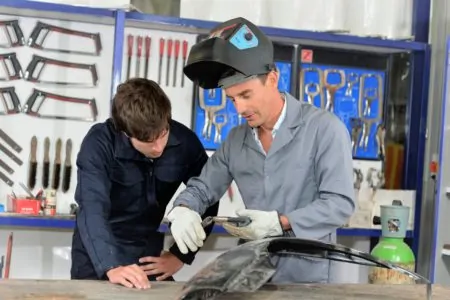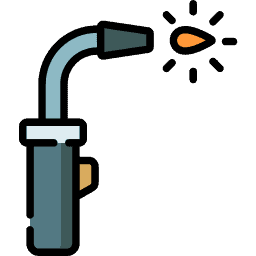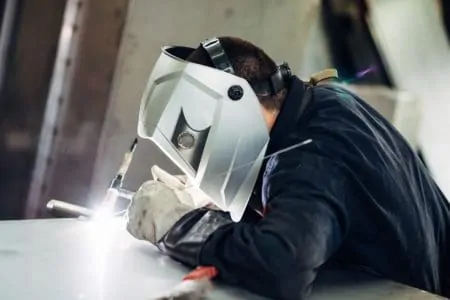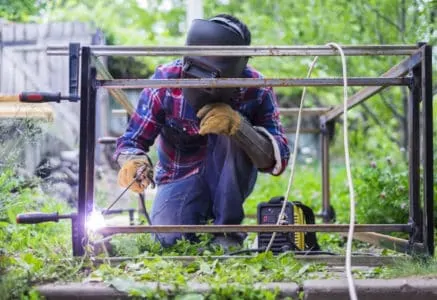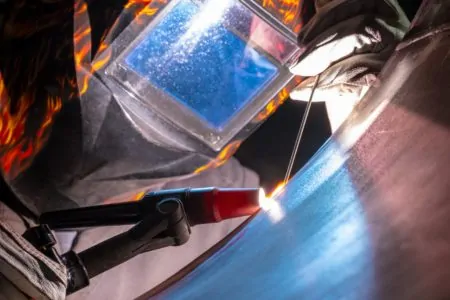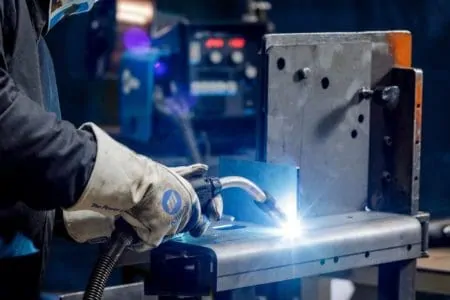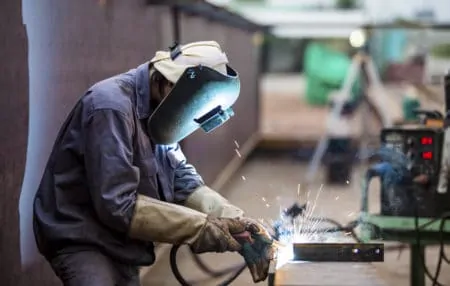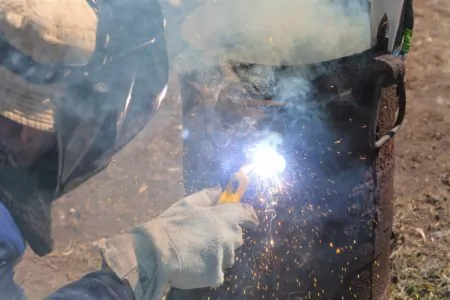How do you decide which is the best welder for beginners? There are so many to choose from that it can be confusing. You could take a chance and get a welder to try it out. Hopefully, it works out just fine, but it is an expensive mistake to get it wrong.
Welding is hard enough to learn with an appropriate welding machine. We look at 7 of the best welders for beginners to make your choice easier.
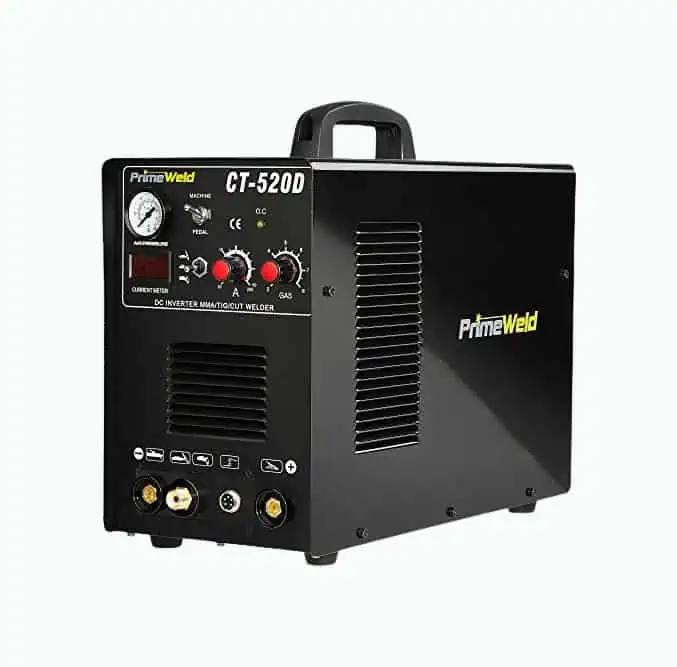
- Multi-purpose
- Easy to use control dials
- Easy to transport
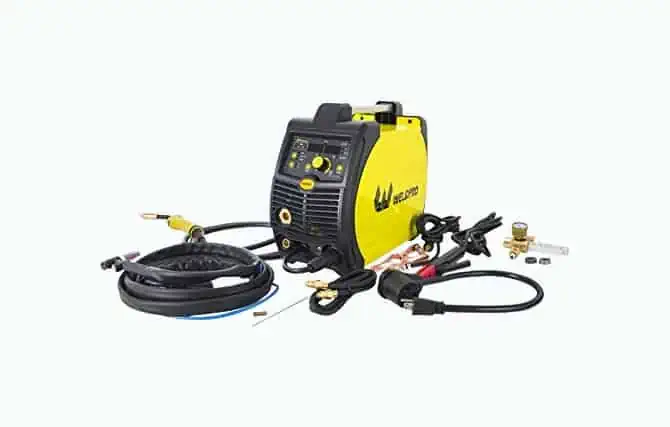
- Complete kit
- Only weighs 30 pounds
- 3-in-1 welder
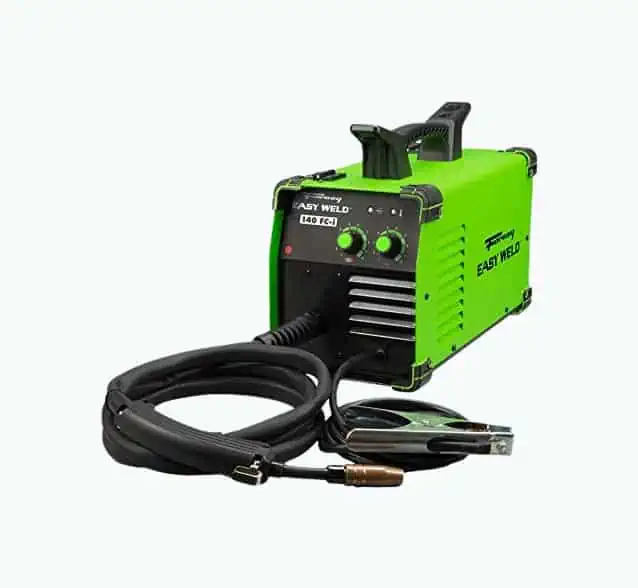
- Lightweight & portable
- Gasless flux-core
- Budget-friendly
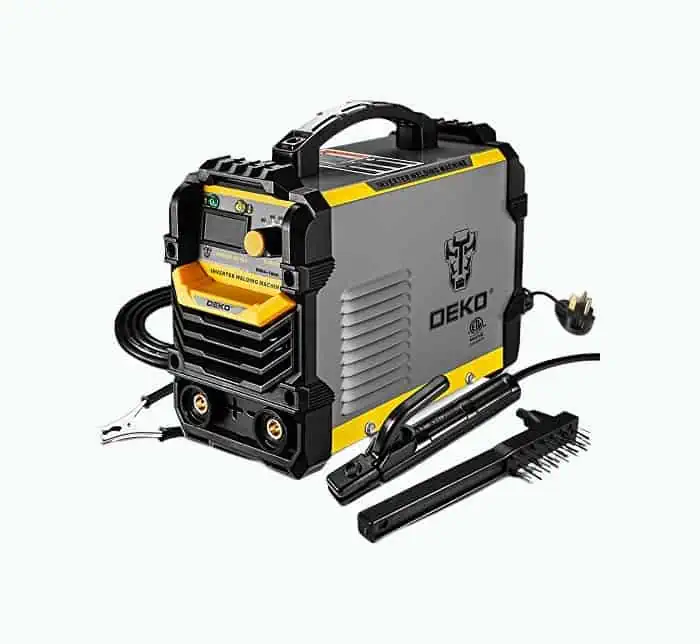
- Lightweight inverter technology
- Comes with range of accesories
- Simple controls
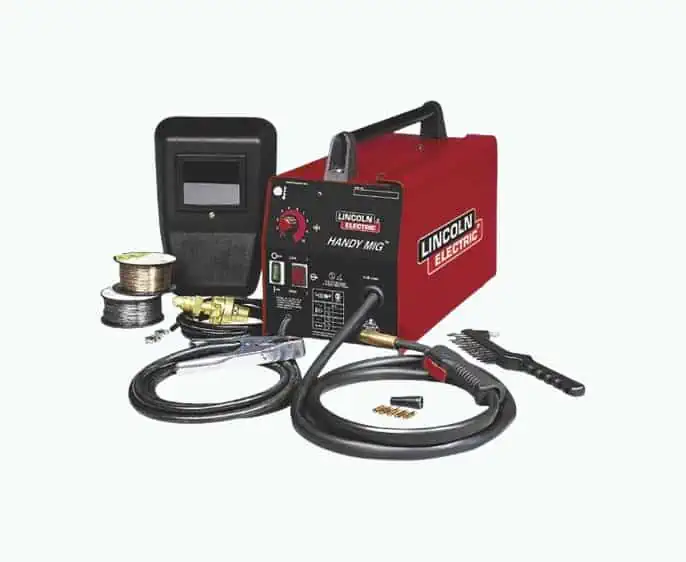
- Increased safety features
- Fully-kitted
- Mid-priced for quality
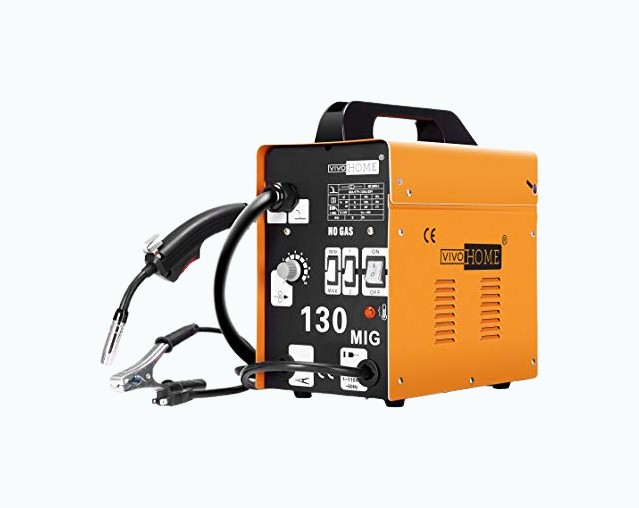
- 10 welding speeds
- 4 levels of current
- Gasless welder
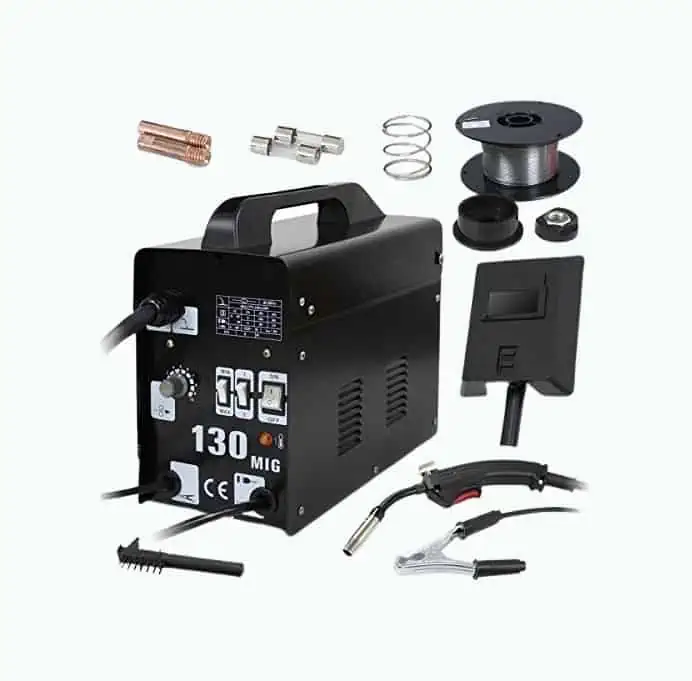
- 10 feed rate settings
- Range of accessories
- Easy controls
Review Methodology: At Sensible Digs, we bring you the most comprehensive and detailed analysis on the best beginner welders. Our professional team conducts hands-on tests and assessments, utilizing benchmarks to compare and rank each product. Our reviews are based on extensive research, data, and firsthand experience. We evaluate each welder’s performance, scoring them on key decision-making criteria such as ease of use, safety features, versatility, and durability. We dive into design choices and their impact on user experience, providing evidence that demonstrates our expertise. Our goal is to give you the results you need to make an informed decision. Trust us to guide you to the best welding equipment for beginners.
The Best Beginner Welders of 2024
If you are new to welding, understanding what each machine does is a bit like asking someone to explain the theory of relativity. We get that it’s confusing, which is why we dedicated this search to make your choice easier.
Primeweld 3-in-1 200 Amp TIG Welder
Best TIG Welder for Beginners
If you are considering taking up TIG welding, then this welder is the ideal candidate. It is a TIG welder first and foremost, but it also acts as a multi-process welder. It plasma cuts, TIG welds, stick welds and arc welds.
It’s also lightweight and portable, making this the ideal welder to take on the road with you. It is rugged, durable, and versatile, which are superb attributes in a beginner welding machine. TIG is not the easiest method of welding to learn, so if you are attempting it, choose the best welder.
What We Like
Multi-Purpose
Why restrict your learning to TIG. Why not master stick and arc welding at the same time. This welder is versatile, meaning you can swap between styles for the best results.
Easy To Use Control Dials
When you start as a welder, you want a machine that’s easy to understand and won’t leave you scratching your head, wondering how it works. This Primeweld model has two dials, a pedal or machine switch and a current meter.
Take It Anywhere
This welder is lightweight and portable, making it the perfect choice for taking to the job. It weighs just under 36 pounds, and with the large carry handle, it is easy to transport from place to place.
What We Don't Like
Not the Cheapest
We get that the best policy is not always the cheapest one, but you will need to part with a sizable chunk of money to get this welder. That said, it is a quality product that should stand the test of time.
Product Specs
| Weight (pounds) | 35.7 |
| Dimensions (inches) | 23.58 x 16.81 x 12.8 |
| Multi-process | TIG, MIG, stick, arc, plasma cutter |
| Voltage | 240 |
| Max amps | 200 |
| Duty cycle | 60 percent |
| Price | $$ |
| Warranty | 3-year |
Our Ratings
User Experience
Weldpro 200 Amp Inverter Multi-Process Welder
Best Beginner Multi-Process Welder
This is Weldpro’s flagship welder. It is capable of MIG, lift TIG and stick welding, so if you want a welding machine covering all the bases, this could be the one. It has an easy to read display that allows you to simplify the control of the amperage and the feed rate.
This welder is lightweight, weighing just 30 pounds, and it has a 200-amp maximum output, meaning that you can weld across a wide range of different metals, with varying thickness. This machine also comes with overheat protection.
The package includes a 13 ft WP-17 TIG torch, a 10 ft MIG torch, an earth clamp, a power adaptor and a gas hose. It comes with almost everything you need to start welding.
What We Like
Complete Package
It comes with all the kit you need to start welding straight out of the box. All you need is the gas supply, and away you go. It has a MIG and TIG torch, power regulators, and it even has a ready supply of tips.
Only Weighs 30 Pounds
Weighing just 30 pounds means that this welder is not only practical; it is portable too. So, it can easily transport to the job site or around the home.
3-in-1 Welder
A 3-in-1 welder is the best type because it saves you extra expense if, once you’ve learned how to MIG weld, you can then switch to the stick and TIG methods. It is a versatile machine and a great tool to learn with.
What We Don't Like
Not a Budget Option
You need to be pretty sure that welding is going to be your new favorite pastime before parting with the cash for this welder. It is not a cheap option. Some might say it is too expensive for a beginner welder. That may be so, but it is the best multi-process welder.
Product Specs
| Weight (pounds) | 30 |
| Dimensions (inches) | 17.72 x 8.66 x 14.96 |
| Multi-process | TIG, MIG, stick |
| Voltage | 110/240 |
| Max amps | 200 |
| Duty cycle | 30 percent |
| Price | $$$ |
| Warranty | 2-year |
Our Ratings
Personal Perspective
Forney Easy Weld 261 140 FC-i MIG Welder
Best MIG Welder for Beginners
When you name your product “Easy Weld,” you can be sure it is an ideal machine to learn the craft. This is a MIG welder, so it is the easiest method to learn. It has a maximum output of 140 amps and a 120V input.
It is also a gasless, flux-cored welder, so again, if you are learning the ropes, you don’t have to pay out for expensive gas canisters. It also makes it an easier process to learn. This welder has infinite voltage and wire speed control to regulate the welding rate.
This welder is ultra-lightweight, compact and easy to store away, making it the ideal choice for hobbyists and DIY enthusiast welders working from the garage or home workshop.
What We Like
Lightweight and Portable
These compact welders are aimed at the home market, so being lightweight and compact is a major bonus. They are easy to set up and pack away, taking up a minimum amount of room space.
Gasless Flux-Core
Because there is no gas, it means you can start welding straight from the box. Sure, at some point, you are going to need to learn about gas protection, but for now, enjoy the process in its simplified state to get you used to how a welder handles.
Great Price
This welder is a third of the price of the Weldpro. When you are a beginner, the budget is always a factor because you don’t need to spend piles of cash to get onto the welding ladder. Some budget machines will get you onto the lower rungs for a fraction of the price.
What We Don't Like
Slow Feed Rate
Some users have complained that the wire feed rate is on the slow side. It isn’t such an issue when you are a beginner, but as you learn, you increase your speed, and then it can slow you down, which can become a problem.
Build Quality Issues
As with all products built on a budget, this Easy Weld is no different. To save costs, Forney has used lesser grade materials, relying on plastic instead of metal. It isn’t a massive issue if you accept that you get what you pay for. It’s the difference between a welder for now or a welder for life.
Product Specs
| Weight (pounds) | 19 |
| Dimensions (inches) | 16.7 x 12 x 8.1 |
| Multi-process | MIG |
| Voltage | 120 |
| Max amps | 140 |
| Duty cycle | 30 percent |
| Price | $$ |
| Warranty | 1-year |
Our Ratings
Community Feedback
DEKOPRO 110/220V Stick MMA Welder
Best Stick Welder for Beginners
Okay, if you want a lightweight welder, get one with inverter technology. Inverters are the new version of transformers, enabling you to regulate the quality of the arc. Inverters are more efficient and precise. However, they don’t have the same capacity handling load that transformers do, so you might be limited to workload.
This stick welder is suitable for welding aluminum, mild steel, stainless steel, and other non-ferrous materials. It is a go-anywhere welder, weighing just 12.1 pounds. It makes it the ideal welder if you are looking to take your skills on the road.
The package comes with a stick torch, power adaptor, wire brush and earth clamp.
What We Like
Lightweight Inverter Technology
The inverter replaces heavier and less efficient transformers as a means of controlling the accuracy of the arc. Also, inverters are lighter and more advanced, so they can deal with adjustments more rapidly.
Great Price
For a starter welder, this is an excellent price. It isn’t going to rival the premium models, but it will set you on course for learning to weld and be a reliable machine for several years.
Simple Controls
With an on/off switch, a current dial, and a current meter, this welder is simple to use and control. This is ideal if you are learning the ropes and want to keep things as simple as possible.
What We Don't Like
Build Quality Issues
When things are this cheap, the quality of the parts will be reduced compared to higher-end models. Less expensive components feature heavily, reducing the operating lifespan of this welder.
Rods Stick at 110V
Everyone reports that this welder works well at 220 volts, but at 110V, the rod tends to stick, making it almost impossible to get a great weld line and joint.
Product Specs
| Weight (pounds) | 12.1 |
| Dimensions (inches) | 16.1 x 11.4 x 6.3 |
| Multi-process | Stick |
| Voltage | 110/220 |
| Max amps | 160 |
| Duty cycle | 40/60 percent |
| Price | $ |
| Warranty | 1-year |
Our Ratings
First-Hand Impression
Lincoln Electric K2185-1 Handy MIG Welder
Best Beginner Welder for Home Use
There is a clear distinction between home welding kits and those used for industrial applications. Home welders are versatile and compact, focusing on convenience and portability.
This Lincoln Electric welder scores highly for home use. It’s a MIG welder, so it won’t cover other types of welding, but it is an excellent choice for home repairs, projects and hobby users. It has several safety features, including the cold contactor facility that keeps the spool wire cold until you pull the trigger.
It has a 20 percent duty cycle, so not the best in its class, but for home projects, where speed is less of an issue, this welder is quality.
What We Like
Increased Safety Features
Cold contactor safety means that the spool wire is kept electrically cold until the trigger is depressed. This is a great safety feature because it stops the feeder wire melting before you are ready, and it gives you greater control.
Fully Kitted
This set has the gas regulator, the power adaptor, 6 ft power cord, 8 ft clamp cable, gas nozzle, MIG torch, 1-pound of 0.035-inch flux-core wire and 2 pounds of 0.025 solid MIG wire. It even comes with replacement tips.
Mid-Priced for Quality
There’s a lot to be said for pitching your price-point somewhere in the middle. Too high and people walk away, and too low, and everyone is suspicious why it is so cheap. Mid-priced is the way to go, as it caters to people who want a quality welder without the second mortgage.
What We Don't Like
Not Made in the USA
The description says it is made in the USA, but Poland seems to be the country of manufacture. Now, this is only an issue if you are a staunch supporter of American industries. Poland is famed for its welding industry, so if anyone knows how to make a welding kit, it’s the Polish.
Not the Cheapest
The price is a pro and a con. Some won’t justify the extra couple of hundred dollars needed to get this machine, while others will see that it is mid-priced and offers better value than a budget model. It comes down to personal choice at the end of the day.
Lacks Power
The duty cycle is at 70 percent, but the amperage is low, making this a hobbyist and DIY-enthusiasts welder. You would never tackle heavy-duty work using this welder, that’s for sure.
Product Specs
| Weight (pounds) | 26 |
| Dimensions (inches) | 18 x 10.3 x 16.75 |
| Multi-process | MIG |
| Voltage | 110 |
| Max amps | 20 |
| Duty cycle | 70 percent |
| Price | $$ |
| Warranty | 5-year |
Our Ratings
User Experience
VIVOHOME Portable Flux Core Welder
Best Portable Welder for Beginners
While this might not be the lightest welder, it is a gasless version, so it requires no shielding to produce good quality welds. For that reason, it is a great option when traveling to and from job sites.
The gasless feature means that the flux-cored wire self-releases metal inert gas from the welding process that prevents oxidation of the weld. This makes it a great choice of welder for home repairs and lighter steel projects.
It has 4 levels of current flow and 10 welding speeds, so you can increase the welding rate as you improve.
What We Like
Complete Package
Imagine unboxing this welder and finding everything you need to get you started. It even comes with the welding face shield and several other useful accessories.
Packed With Safety Features
It has overheat protection, a built-in fan and rubber feet for added grip. It also requires no gas for inert shielding, so you don’t need to store dangerous canisters.
Beginner Welder, Beginner Price
Getting a welder that is entry-level in every way is crucial. It means welding is affordable and not beyond the reach of most people. Just bear in mind, it won’t be a welder for life.
What We Don't Like
Cheap Price, Cheap Parts
You get what you pay for, so buying a cheap welder is a great idea initially, but it has limitations that will become apparent as you progress, and that’s where dissatisfaction sets in. Pretty soon, you will be scouring the internet for a new welder.
Lacks Power
This is a 110-volt welder, so it is aimed at the domestic market. Don’t ask too much of this welder as it might not deliver. Use it for lighter duties and thinner materials like mild steel and sheet steel.
Product Specs
| Weight (pounds) | 36.9 |
| Dimensions (inches) | 20.6 x 15.1 x 12.4 |
| Multi-process | MIG |
| Voltage | 110 |
| Max amps | 130 |
| Duty cycle | 60 percent |
| Price | $ |
| Warranty | 1-year |
Our Ratings
Personal Perspective
Super Deal PRO Commercial MIG 130 Welder
Best Value for Money Beginner Welder
When we talk about a value for money welder, we are moving in a pretty crowded market. There are many, entry-level welders to appeal to the novice, so let’s start with the price as our base point.
This model is the cheapest to feature in the review, making it an ideal learner welder. And you’d think, for this price, you would miss out on many features reserved for better machines. This welder has a flux-cored wire that naturally produces inert gas during the welding process. It is a gasless welder.
It has 4 speed levels and 10 feed rate settings to adjust the spool feed to match the task and the skill level. And it comes with all the accessories, including a face shield, to get you welding from the get-go.
What We Like
Super-Amazing Price
You just can’t argue with a welder that costs so little. It may not be the best, but no one is disputing that. You can always get better for the money, but as an entry-level welder, this has it all.
Accessories Galore
Some of the premium welders struggle to give you even half what this delivers for a much higher price-tag. To include a face shield, spare tips, and fuses is incredible when you think what this costs.
Easy Controls
With just a few buttons and a speed-control dial, you can have this welder up and running in no time. There’s not even any gas to worry about. It also means it’s an easy set-up and pack-down.
What We Don't Like
Lower Quality
This is not the promised land for welders; it’s just a cheap model to get you started. Once you accept this, you can weld away, happy in the knowledge that you will outgrow this machine and seek a better alternative one day.
Trips the Breaker
Once you plug this machine in, it holds the arc for about 5 seconds and then trips the breaker. This is not the case with all, but many have mentioned this as a recurring theme.
Product Specs
| Weight (pounds) | 38 |
| Dimensions (inches) | 20.25 x 15 xx 20.5 |
| Multi-process | MIG |
| Voltage | 110 |
| Max amps | 130 |
| Duty cycle | 35 percent |
| Price | $ |
| Warranty | 1-year |
Our Ratings
Community Feedback
| Product | Best | Weight | Dimensions | Welding process | Voltage | Max amps | Duty cycle | Warranty |
|---|---|---|---|---|---|---|---|---|
| Primeweld 3-in-1 TIG Welder | TIG | 36 lbs | 23.58 x 16.81 x 12.8″ | TIG, MIG, stick, arc, plasma cutter | 240 | 200 | 60% | 3-year |
| Weldpro 200 Amp Inverter Welder | Multi-Process | 30 lbs | 17.72 x 8.66 x 14.96″ | TIG, MIG, stick | 110/240 | 200 | 30% | 2-year |
| Forney Easy Weld FC-i MIG | MIG | 19 lbs | 16.7 x 12 x 8.1″ | MIG | 120 | 140 | 30% | 1-year |
| DEKOPRO Stick MMA Welder | Stick | 12 lbs | 16.1 x 11.4 x 6.3″ | Stick | 110/220 | 160 | 40/60% | 1-year |
| Lincoln Electric MIG Welder | Home Use | 26 lbs | 18 x 10.3 x 16.75″ | MIG | 110 | 20 | 70% | 5-year |
| VIVOHOME Flux Core Welder | Portable | 37 lbs | 20.6 x 15.1 x 12.4″ | MIG | 110 | 130 | 60% | 1-year |
| Super Deal PRO Commercial MIG | Value For Money | 38 lbs | 20.25 x 15 xx 20.5″ | MIG | 110 | 130 | 35% | 1-year |
What Is the Best Type of Welder for a Beginner?
The best type of welder for beginners is a MIG welder. It is the easiest method of welding to master, making it ideal for novices. The good news is that most MIG welders are multi-functional, adapting to TIG and stick welding with ease. So, once you’ve learned MIG welding, you can graduate to another style.
Of course, the type of welder does vary with each project. Some methods are better than others when dealing with specific metals. MIG is popular, but it can be messy and not very precise.
TIG welding, in comparison, is neat and accurate, making it the ideal welding method when you are working on sheet metal and intricate projects. It’s also a slower process. It’s why MIG welding is better for beginners because you will make mistakes, where the neatness of the weld is less critical.
There’s also the question of costs. TIG welding is more expensive than MIG and stick welding, so you are less likely to learn using a TIG welder.
Most Common Welding Processes
There are lots of welding methods, but there are three that are commonly used.
MIG
MIG welding uses a wire electrode on a spool to feed at a predetermined rate. An electrical current is applied to the base metal and the wire to create the arc, which causes it to melt with the base metal, producing a strong joint.
MIG welding is ideal for both thin and medium thickness metal. It is easy to learn and relatively clean, requiring almost no clean-up. It is also effective when welding outside, even in windy and dirty conditions.
Pros
- Easy to learn.
- Better for medium to thin metals.
- Faster welding rate.
- Relatively cheap.
- Ideal for outdoors.
Cons
- Can be messy.
- Lacks precision.
- Requires shielding gas.
- Contamination of the weld is common.
TIG
TIG welding differs from MIG because it uses a non-consumable electrode to produce the weld. Typically made from tungsten, the electrode is protected from contamination by the argon shielding gas and the filler metal.
The current creates an arc of energy through ionized gas and metal vapors known as plasma. TIG is harder to master because it requires two hands and greater skill. TIG is best suited to welding thin alloys such as stainless steel and non-ferrous metals like aluminum, magnesium and copper alloys.
Pros
- Precise.
- Neat welds.
- Ideal for thinner materials.
- Welds stainless steel.
- Great for alloys like aluminum and magnesium.
Cons
- Hard to learn.
- Expensive set-up costs.
- Time-consuming.
- High light intensity.
Stick
Stick welding has been a firm favorite with home welders for many years. It uses an electrical current to create an arc of energy to bridge the gap between the electrode and the base metal. Stick is the ideal method for both indoors and outdoors and can even function in windy weather.
It’s also the cheapest method, and it creates strong bonds even on rusted metals. Stick welders do have limitations, especially with the thickness of the metal. It is capable of welding metal no thinner than 18 gauge. It is difficult to master because it is a challenge maintaining an arc.
Stick is better suited to thicker metal, making it the ideal method for industry and construction.
Pros
- Cheap to set-up.
- Ideal for home welding.
- Creates a strong weld.
- Works on rusted metals.
- Great for welding thick material.
Cons
- Hard to master.
- Arc blow is common.
- Hard to maintain the arc.
- Slower process.
Metal Vs. Weld Process
| Material | MIG | TIG | Stick |
|---|---|---|---|
| Steel | X | X | X |
| Stainless steel | X | X | X |
| Aluminum alloys | X | X | |
| Cast iron | X | ||
| Cromoly | X | ||
| Copper | X | ||
| Brass | X | ||
| Exotic materials (magnesium, titanium, etc.) | X |
How To Choose the Best Beginner Welders
There are so many variables when exploring welding for the first time. Here are some pointers to look for in your first welding machine.
FAQs
The Start of Something Beautiful
Once you start welding, you’ll never look back. It is creative, practical and rewarding. It will turn you into a DIY and repair God in the eyes of others. So, get on the ladder, learn the craft and the rest will be history.
Welders for beginners are the ideal tool, with many offering the bare minimum to get started, while others will be your welding buddy for life. It all comes down to the budget. As an old Crusading Knight once said to Indiana Jones, “Choose wisely.”
